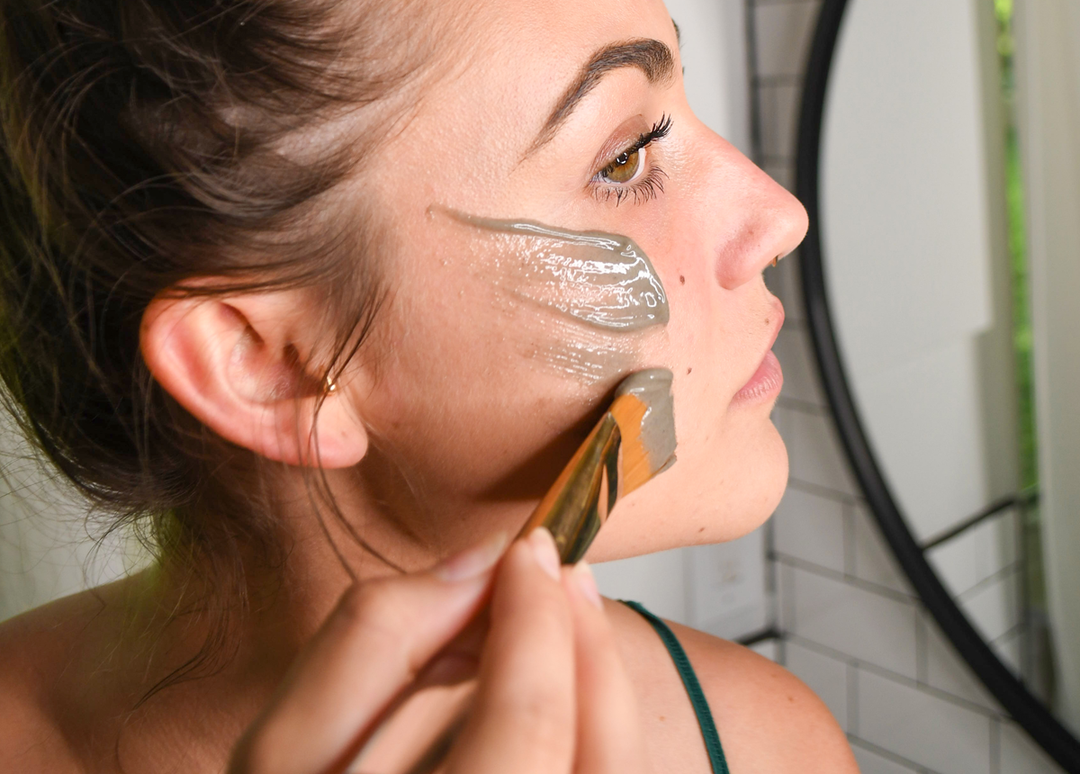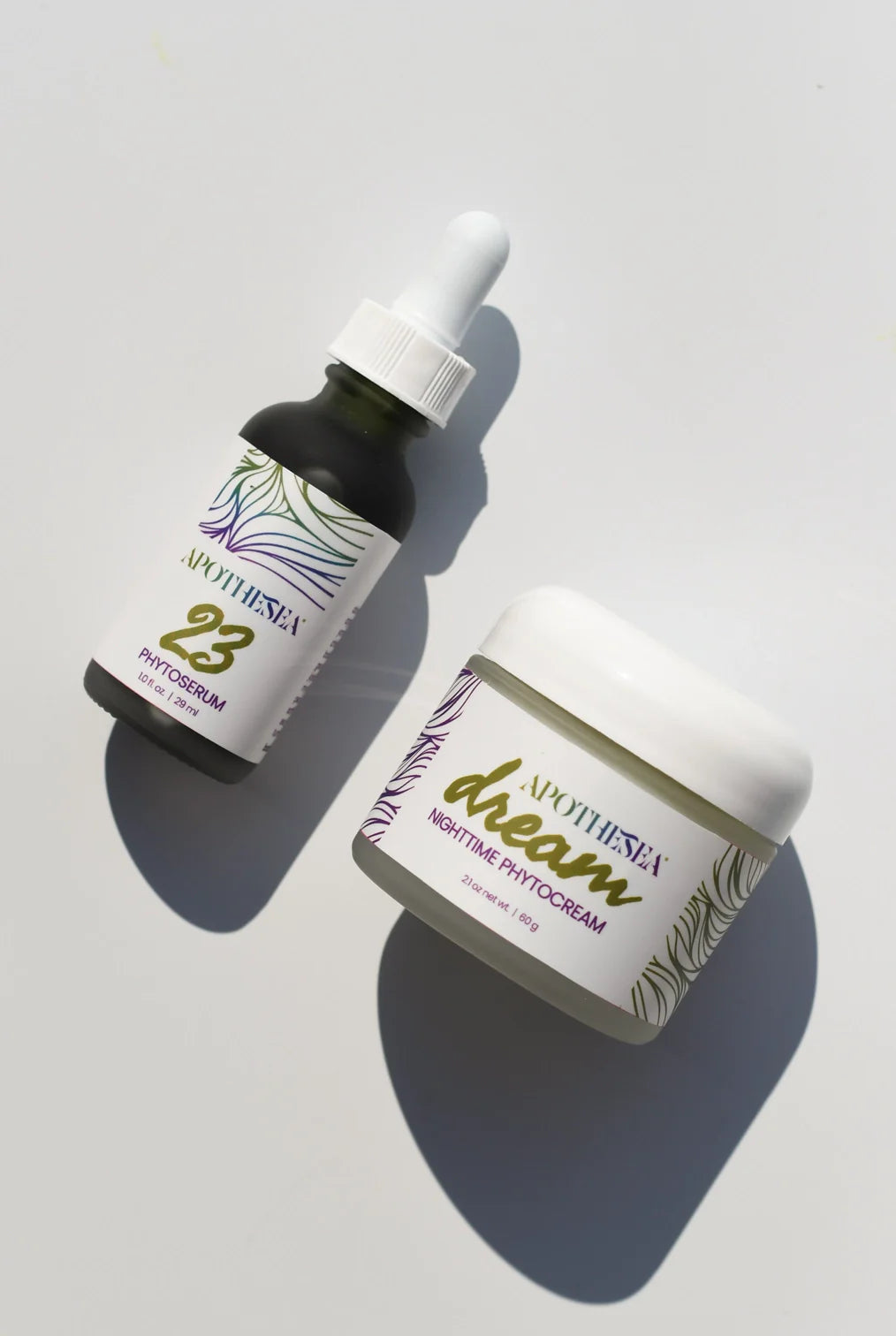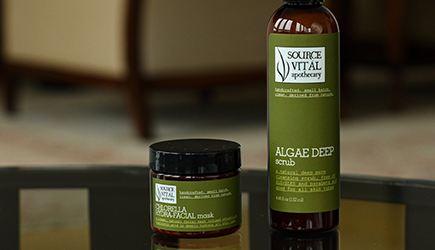The Care & Keeping of Dry Skin
Achieve soft, glowing skin all winter long
At Source Vitál, we approach skin care from the perspective that everyone’s skin is unique. While it can be helpful to label skin as “oily,” “dry,” or “combination,” we operate under the philosophy that while these labels are generally helpful, each person’s skin care routine should be highly personalized, despite their overall skin type.
Wintertime can be an especially difficult season to care for the skin, especially those who suffer with dry skin. Use these expert tips, and tricks to keep your complexion looking and feeling its best.
We will be breaking down:
- What dry skin is;
- How to tell if you have dry skin;
- What causes dry skin;
- How to prevent dry skin; and
- Caring for your dry skin
What is dry skin?
Not all dry skin conditions are equal. There are actually two different types of dry skin; skin that is oil dry and skin that is water dry.
Oil dry skin is caused by underproductive sebaceous glands. Sebaceous glands produce sebum, or oil, that serves as our skins natural protector. Skin that doesn’t produce enough sebum can become dry and flakey, feel tight and uncomfortable, and appear dull and lifeless.
Water dry skin is dehydrated skin. Imagine the texture of a ripe, juicy grape. Now imagine the texture of a raisin. That’s the difference between skin that is well hydrated and skin that is dehydrated.
Your skin could be dry, dehydrated, or even both.
How to determine if you have dry skin
With skin that is oil dry, you might experience dry and oily patches, which can make treatment confusing. Dehydrated skin tends to have a thin, crepey appearance. The skin becomes so weakened that you may even be able to see small capillaries near the surface of the skin.
A good rule of thumb for determining if you’re oil dry or just water dry is to pay attention to the way your skin reacts after proper moisturization. If you skin still is still tight and dull afterward, you likely have dehydrated skin. Some common symptoms you may experience are:
- Feelings of tightness, especially after exposure to water
- Itching
- Rough skin
- Flaking or peeling
- Fine lines and cracks
- Redness
- Ashiness
What causes dry skin?
For the most part, dry skin is caused by environmental factors such as seasonal weather conditions or climate. Lifestyle can also factor into dryness, including:
- Medication
- Poor diet
- Dehydration
- Normal aging
- Hot showers
- Harsh soaps and overly-aggressive skin care products
- Exposure to too much sun or wind
It may take some trial an error, but once you determine the source of your dry skin, switching up your routine is fairly straight forward.
Preventing Dry Skin

It seems obvious, but making sure you’re drinking enough water is the first – and most important – step in any skin care regimen. However, in our busy lives, proper hydration can take a back seat to our to-do list.
Here’s a simple formula to determine how many ounces of water to drink in a day: divide your weight (in pounds) by two.
The resulting number represents the amount of water, in ounces, to try to consume in a day’s time. For example, a 150-pound person should drink about 75 ounces of water per day. If you are exercising and sweating a lot, you will want to up the amount of water. We recommend carrying a bottle of water in your purse or keeping a large cup on your desk for easy-access hydration throughout the day.
Try making these simple adjustments in your daily routine to help you skin and body feel more hydrated.
Limit your bathing time to 5 or 10 minutes and avoid using hot water. Frequent and lengthy exposure to hot water can quickly dry out the skin as the temperature pulls moisture out of the skin’s cells. We also recommend blotting the skin dry upon exit, and follow up immediately with a moisturizer while the skin is still a bit damp. This allows the skin to soak up all that goodness. For body, we suggest a nourishing rich, soothing moisturizer like our Nourishing Cream.
Caring for dry skin

For dry skin, we generally recommend products that are rich in emollient ingredients that will prevent water loss. Try to steer clear of products that include synthetic fragrance, DEA/MEA/TEA, petrochemicals, and sodum lauryl/laureth sulfate in their ingredients, all of which can exacerbate dry skin.
For any skincare regimen, you’ll need the following:
- Cleanser – for dry skin types look for creamy, milky cleansers.
- Toner – steer clear from formulas with high alcohol content.
- Exfoliator (1-2x/week) – keeping skin free from dry, flakey skin is a must!
- Serum – look for formulas that contain rich botanicals such as evening primrose oil.
- Moisturizer – look for rich, creamy formulas, and use liberally.
- Mask (1-2x/week) – when skin is dry, avoid anything too drying or aggressive!
To help you restore balance and suppleness to the skin, we offer an extensive array of products, for both face and body, that work hard to get your complexion in tip-top shape.
With a little time, effort, the right ingredients, and a commitment to consistency, your dry, lackluster skin will be a thing of the past. Questions? Shoot us an email – we’re happy to help get you started!








Leave a comment